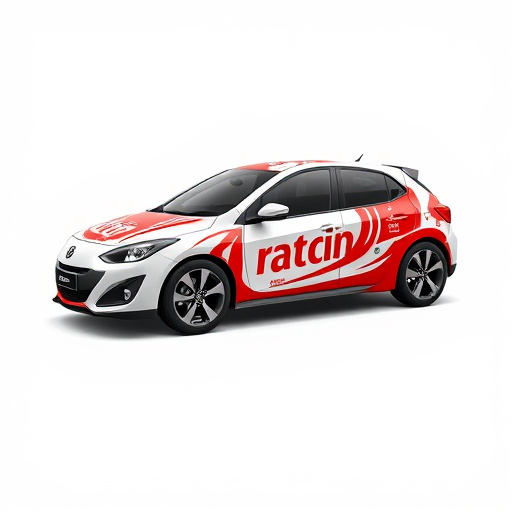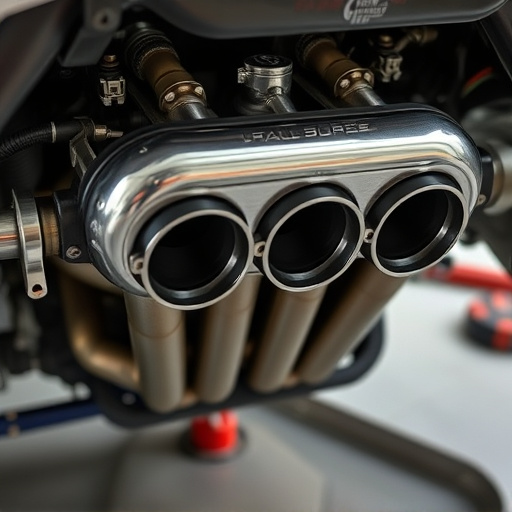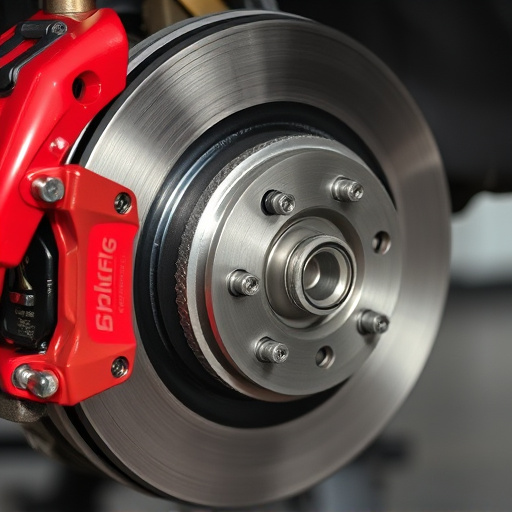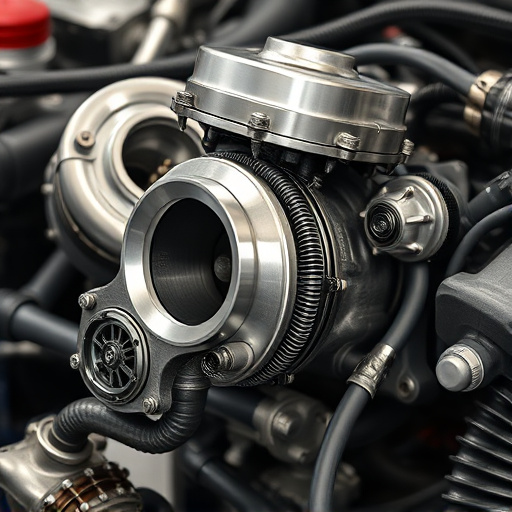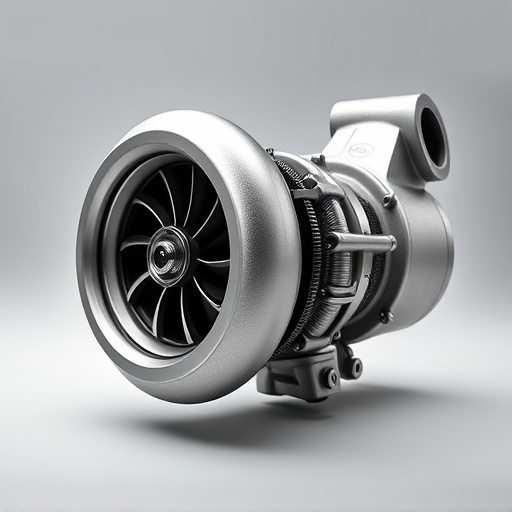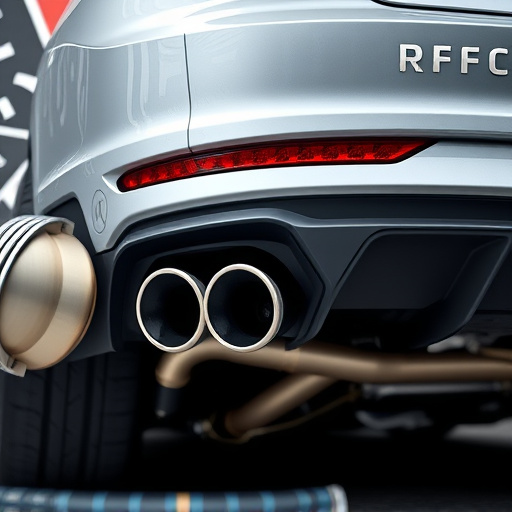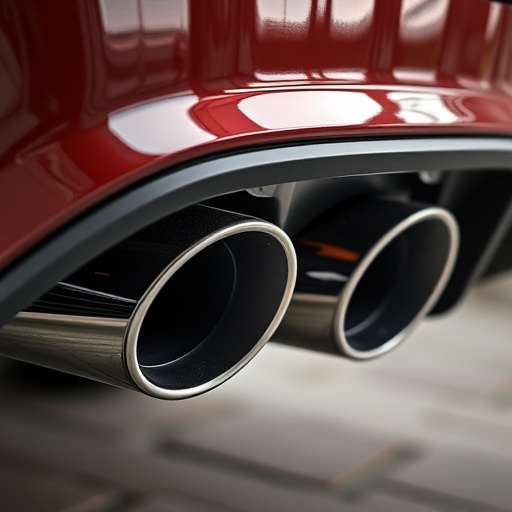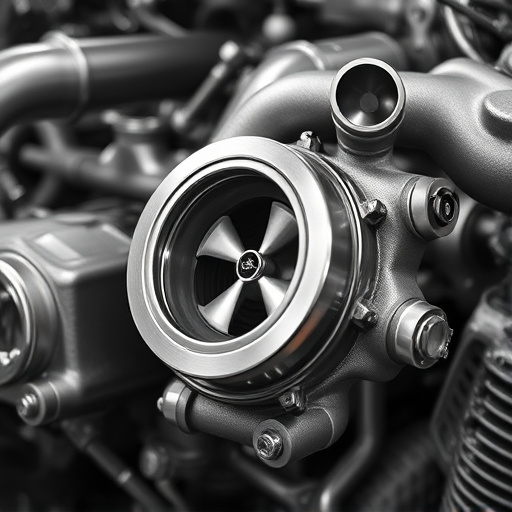Brake pads and rotors, key components in vehicle braking systems, work synergistically to bring cars to a stop. Advanced materials like organic and ceramic compounds offer enhanced heat dissipation and reduced dust generation compared to traditional steel pads. Rotors, usually cast iron or carbon fiber, endure extreme heat and force, with design factors like thickness, material, and surface finish impacting their performance. Optimizing brake pad and rotor interaction is crucial for safe, efficient braking, influenced by components like air filters and mufflers that indirectly enhance overall system functionality. Regular maintenance ensures optimal stopping distance, stability, and vehicle control.
“Unleash the power of precise braking with our deep dive into the science behind brake pads and rotors. From the intricate composition of pads, made from materials like ceramic and steel, to the crucial role of rotors in maintaining optimal braking dynamics, this article illuminates their symbiotic relationship. We explore how these components interact, offering insights on performance optimization and essential maintenance tips for maximizing your vehicle’s stopping power. Discover the key factors that ensure safe and effective braking.”
- Understanding Brake Pads: Materials and Composition
- The Role of Rotors in Braking Dynamics
- Optimizing Performance: Pad-Rotor Interaction and Maintenance Tips
Understanding Brake Pads: Materials and Composition
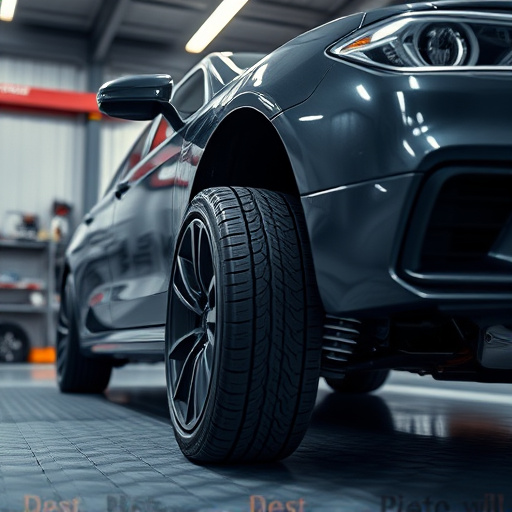
Brake pads are a crucial component in every vehicle’s braking system. Understanding their composition is key to grasping how they interact with brake rotors to slow down or stop a car. Brake pads are typically made from a combination of materials, including steel, copper, and various types of friction-modifying compounds. The primary function of these materials is to convert kinetic energy into heat during braking, ensuring effective deceleration while minimizing wear on both the pads and rotors.
The choice of materials in brake pad composition plays a significant role in determining their overall performance. High-performance parts often incorporate advanced materials like organic and ceramic compounds, which offer superior heat dissipation capabilities and reduced dust generation compared to traditional steel-based pads. These materials are designed to withstand extreme temperatures and provide consistent braking power, especially under heavy use or when combined with high-performance air filters and optimized suspension components.
The Role of Rotors in Braking Dynamics
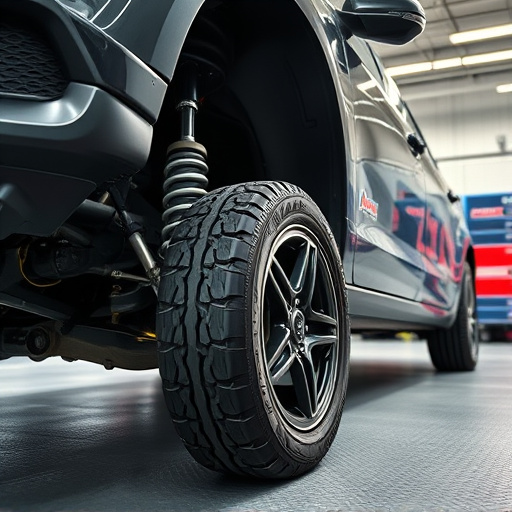
In the dynamics of braking systems, brake pads and rotors work in tandem to bring a vehicle to a controlled stop. Rotors, typically made of cast iron or even carbon fiber in high-performance vehicles, serve as the stationary part of the brake assembly. They are subjected to immense heat and force during braking, playing a crucial role in converting kinetic energy into thermal energy, thereby slowing down the vehicle. The effectiveness of this process is directly influenced by the rotor’s design, including its thickness, material composition, and surface finish, which collectively determine their ability to dissipate heat and maintain structural integrity under severe stress.
Beyond their fundamental function, brake rotors also contribute to the overall performance and efficiency of the entire braking system. Factors like weight (lighter rotors reduce unsprung mass, enhancing handling) and cooling capabilities (vented or solid designs impact heat transfer and fade resistance) are integral considerations in the selection and design of brake components. As such, understanding the interplay between rotor characteristics and brake pad technology is paramount for achieving optimal braking performance and safety, especially when coupled with the vehicle’s other intake components and overall mechanical setup.
Optimizing Performance: Pad-Rotor Interaction and Maintenance Tips
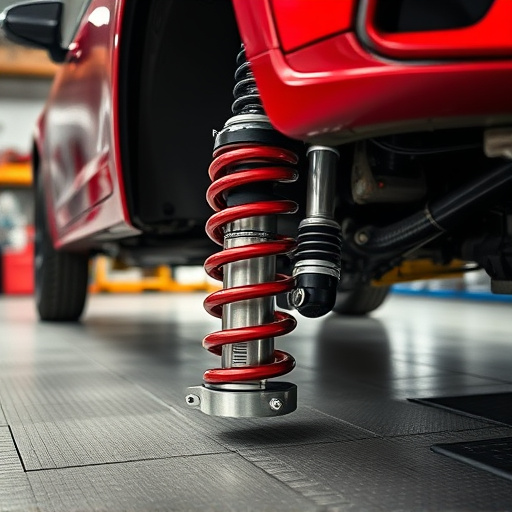
Optimizing the performance of brake pads and rotors is crucial for ensuring safe and efficient braking. The interaction between these two components significantly affects stopping distance, stability, and overall vehicle control. High-performance brake pads are designed to offer superior friction and heat dissipation properties, while rotors need to be smooth, corrosion-free, and well-maintained. Regular inspection and timely replacement of both are essential for optimal performance.
Proper maintenance involves keeping the brake system clean, ensuring adequate clearance between pads and rotors, and monitoring for signs of wear or damage. Maintaining a balanced air filter and efficient exhaust systems can also indirectly enhance braking performance by ensuring clean intake air and quick gas expulsion, reducing overall friction in the engine compartment. Similarly, high-quality exhaust mufflers can suppress noise without compromising airflow, contributing to smoother braking operations.
Brake pads and rotors are essential components that work together to ensure safe and efficient braking. By understanding the science behind their performance, drivers can make informed choices regarding maintenance and upgrades. The right combination of pad materials and rotor design optimizes stopping power, reduces wear, and enhances overall vehicle control. Regular inspection and timely replacement of these critical parts are key to maintaining optimal braking dynamics, ensuring a smoother ride, and promoting safety on the road.


